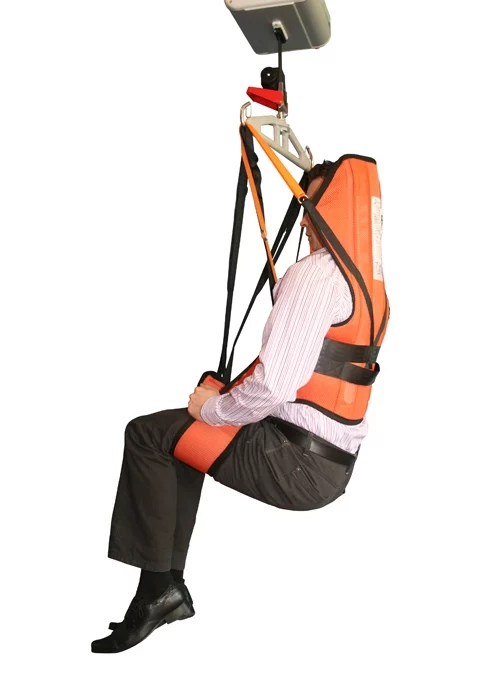How to choose the right patient lifting hoist sling
Posted on 19 June 2019 By Aaron Stretton

In This Article
Choosing the right patient lifting hoist sling for your client is very important in ensuring that they are as comfortable…
Choosing the right patient lifting hoist sling for your client is very important in ensuring that they are as comfortable and supported as possible when being moved with a hoist. But there are loads of different slings in loads of different sizes — so which should you choose?
Here’s a brief guide to some of the most common patient lifting slings and what they’re used for.
Getting the right hoist sling size
The size of the patient lifting hoist sling you choose is very important in ensuring that the person being lifting is as safe as can be. If you choose a hoist sling that’s too big or too small, they could be at risk of falling out of it.
Make sure you measure the patient and get a good idea of their height and weight before specifying a sling. The sling should be close enough to the person’s body to hold them in a well-supported position, without being so small that it is uncomfortable.
Types of patient lifting hoist slings
Universal hoist slings
If you’re needing a move a patient in an upright or seated position, then a universal hoist sling is best. These are shaped to support the patient’s legs, torso, and head if necessary.
The Universal is ideal for people who struggle to control their trunk and hips (and their head if a head support is needed).
Universal slings will usually have split leg sections that give you some flexibility in the positioning of the person’s legs. They can either be held separately, or the straps can be crossed over to keep the legs together.
Hygiene hoist slings
Also known as toileting hoist slings, these are used with patients in the bathroom. They can be used over a toilet or commode to allow the person to use the facilities without needing to be transferred in and out of the sling.
Hygiene slings often have a built-in waist belt that helps to stabilise the user whilst they’re being transferred. It also helps them sit comfortably and securely.
The sling wraps around the middle of the person’s back and under each thigh to hold them in a seated position. This leaves the person’s buttocks uncovered and unsupported so they can be placed on a toilet.
Like the Universal sling, the Hygiene sling can keep the person’s legs together and separate. You might want to keep the legs separate if you need to carry out any personal hygiene procedures.
Hygiene slings should not be used with people who have little core strength or cognitive awareness. Because of the aperture in the sling, the person needs to be aware and strong enough to hold themselves in a sitting position.
Moving and handling hoist slings
Other hoist slings are available that aren’t used to necessarily lift patients, but to reposition them instead. These are particularly useful for moving and handling professionals.
One moving and handling sling that’s particularly handy is the Twin Turner. This is used to roll a patient over in bed.
Another example is the Limb Lifter, which (as the name suggests) lifts people’s limbs either to alleviate swelling or to make it easier for nurses and caregivers to change dressings and carry out hygiene procedures.
Summary
These are the main things you need to consider when choosing a patient lifting sling. Getting the right style and size of sling is key to ensure that the patient is comfortable and well-supported.
Speak to The Experts
Need assistance with product enquiries, general inquiries, or product support? Our Phonelines are open 9am - 5pm Monday to Friday
0113 519 0319
Or, fill out the form for a call back.
